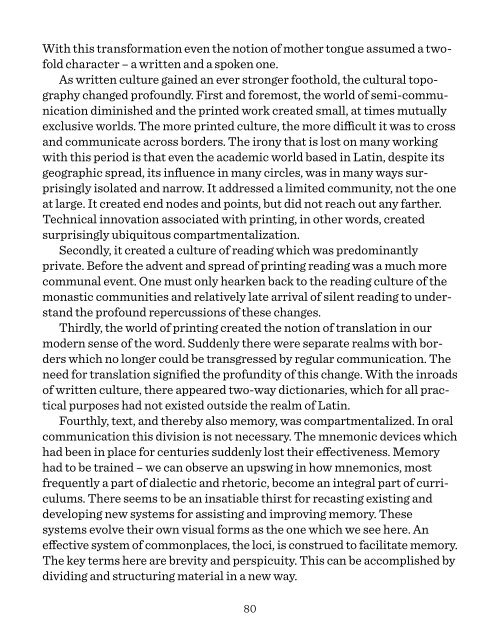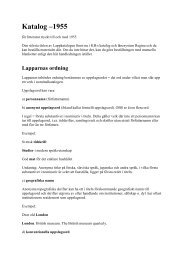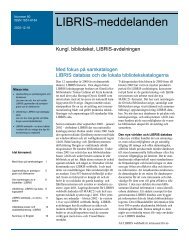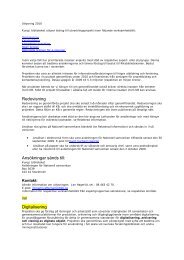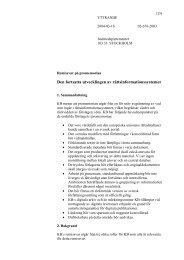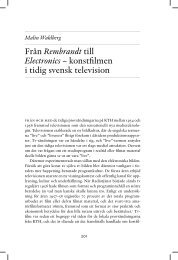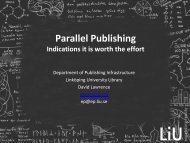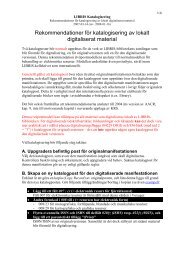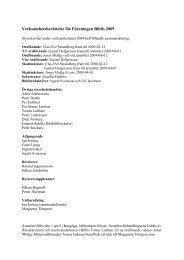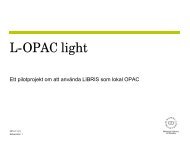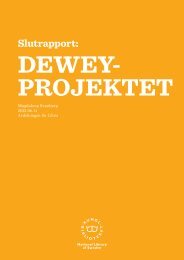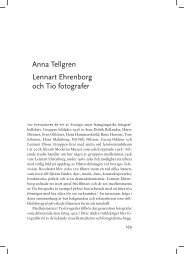Ledarskap och lidelse - Kungliga biblioteket
Ledarskap och lidelse - Kungliga biblioteket
Ledarskap och lidelse - Kungliga biblioteket
You also want an ePaper? Increase the reach of your titles
YUMPU automatically turns print PDFs into web optimized ePapers that Google loves.
With this transformation even the notion of mother tongue assumed a twofold<br />
character – a written and a spoken one.<br />
As written culture gained an ever stronger foothold, the cultural topography<br />
changed profoundly. First and foremost, the world of semi-communication<br />
diminished and the printed work created small, at times mutually<br />
exclusive worlds. The more printed culture, the more difficult it was to cross<br />
and communicate across borders. The irony that is lost on many working<br />
with this period is that even the academic world based in Latin, despite its<br />
geographic spread, its influence in many circles, was in many ways surprisingly<br />
isolated and narrow. It addressed a limited community, not the one<br />
at large. It created end nodes and points, but did not reach out any farther.<br />
Technical innovation associated with printing, in other words, created<br />
surprisingly ubiquitous compartmentalization.<br />
Secondly, it created a culture of reading which was predominantly<br />
private. Before the advent and spread of printing reading was a much more<br />
communal event. One must only hearken back to the reading culture of the<br />
monastic communities and relatively late arrival of silent reading to understand<br />
the profound repercussions of these changes.<br />
Thirdly, the world of printing created the notion of translation in our<br />
modern sense of the word. Suddenly there were separate realms with borders<br />
which no longer could be transgressed by regular communication. The<br />
need for translation signified the profundity of this change. With the inroads<br />
of written culture, there appeared two-way dictionaries, which for all practical<br />
purposes had not existed outside the realm of Latin.<br />
Fourthly, text, and thereby also memory, was compartmentalized. In oral<br />
communication this division is not necessary. The mnemonic devices which<br />
had been in place for centuries suddenly lost their effectiveness. Memory<br />
had to be trained – we can observe an upswing in how mnemonics, most<br />
frequently a part of dialectic and rhetoric, become an integral part of curriculums.<br />
There seems to be an insatiable thirst for recasting existing and<br />
developing new systems for assisting and improving memory. These<br />
systems evolve their own visual forms as the one which we see here. An<br />
effective system of commonplaces, the loci, is construed to facilitate memory.<br />
The key terms here are brevity and perspicuity. This can be accomplished by<br />
dividing and structuring material in a new way.<br />
80


